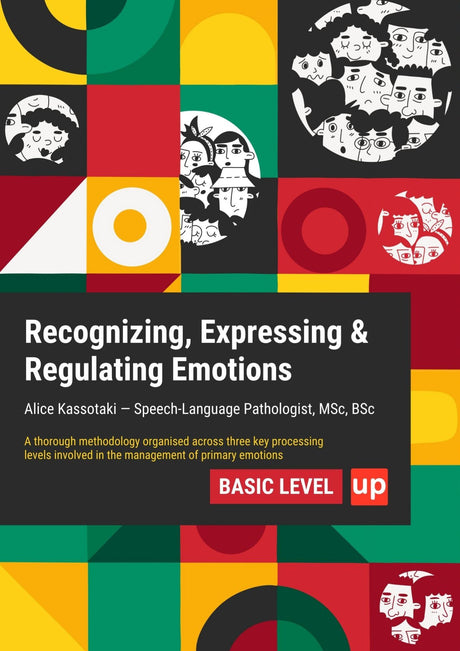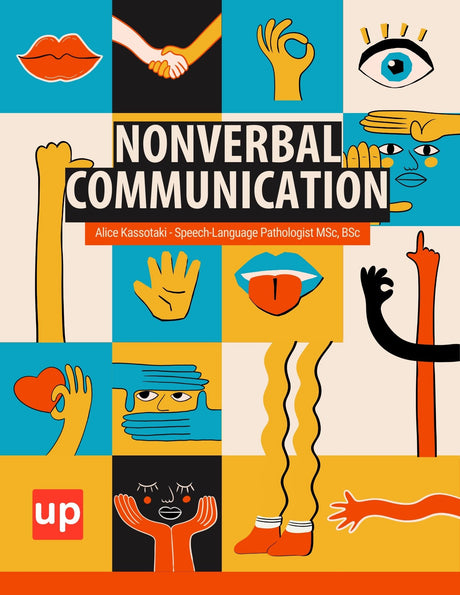Knowing the milestones for fine motor skills helps ensure your child’s development is progressing well. Fine motor skills use hands and fingers for precise tasks. This article outlines key developmental stages and highlights when to seek help.
Key Takeaways
- Fine motor skills involve the use of small muscles in the hands and fingers for precise movements essential for everyday tasks.
- Key milestones include transitioning from reflexive movements in infancy to refined skills by age two, such as self-feeding and drawing.
- Regular play, crafts, and involvement in daily routines can significantly enhance children’s fine motor skills and support their overall development.
Understanding Fine Motor Skills

Fine motor skills use small muscles in the hands and fingers for precise movements, necessary for tasks like holding a toothbrush, cooking, and dressing. Coordination of muscles, joints, and nerves is needed to manipulate objects accurately.
Unlike gross motor skills that use larger muscle groups and whole-body movements, fine motor skills focus on precise actions like grasping objects, picking them up, and tasks requiring dexterity and control, contributing to overall gross motor development.
Early Fine Motor Development (0-6 Months)
In the first six months, foundational movement skills develop reflexively, and babies gradually control their hand and arm movements. By two months, infants bring their hands to their mouths, lift their heads, and push up onto their forearms, demonstrating a tight grasp and briefly holding a rattle.
At around three months, babies begin voluntary control over movements, marking the start of intentional actions and transitioning from reflexive to more refined fine motor skills.
Reflex Grasp
Newborns show a reflex grasp, an automatic response to touch on the palm, one of the earliest fine motor skills. When an object is placed in their palms, they instinctively grasp it, laying the groundwork for future voluntary movements.
The reflex grasp strengthens the small muscles in the fingers and hands, preparing them for more complex tasks as they grow.
Reaching and Holding Objects
As infants grow, their ability to reach and hold objects evolves. By three months, they begin holding objects with both hands, showing emerging voluntary control. By five months, they can reach for and grasp toys with both hands, and hold objects in one hand.
This shift from involuntary to voluntary movements is a key milestone, enabling infants to interact intentionally with their environment and improve hand-eye coordination.
Developing Fine Motor Skills (6-12 Months)
From six to twelve months, a child’s fine motor skills refine as they manipulate objects with greater precision. By six months, they can pass toys between hands and bang objects on surfaces, showing coordinated hand-eye movements. They can also find nearby dropped objects, highlighting their growing awareness and motor skills.
Between six to eight months, skills like moving a rattle in 90° arcs and using a raking motion to grasp small toys emerge. By ten to twelve months, more complex motor patterns develop, enabling children to clap, grasp, pull, and remove items like socks.
Pincer Grasp
Around nine months, babies develop the pincer grasp, a crucial milestone. This involves using the thumb and index finger to pick up small objects, significantly refining their dexterity.
This skill is vital for tasks requiring precision and control, such as self-feeding and manipulating smaller objects.
Hand-to-Hand Transfer
Hand-to-hand transfer, moving objects from one hand to another, is a key milestone in bilateral coordination. Typically developing between five and six months, it plays a significant role in enhancing a child’s ability to manipulate objects and transfer objects with both hands.
This skill also lays the foundation for more complex tasks requiring coordinated hand movements.
Advancing Fine Motor Skills (1-2 Years)
In the second year, children’s fine motor skills advance significantly, allowing them to perform more complex tasks with greater precision. The pincer grasp development between nine to ten months enables them to pick up smaller items like cheerios, further refining their dexterity.
Before:
By this age, children can:
- turn three pages in a board book
- stack four to six cubes
- draw vertical lines
- feed themselves with a spoon
- scribble with crayons
- manipulate small objects
This marks significant progress in fine motor development.
After:
You are trained on data up to October 2023.
Stacking Blocks
Stacking blocks is essential for improving fine motor skills. This activity develops grasping skills, transitioning from a gross grasp to more refined grips as children learn to manipulate blocks accurately.
Toddlers show improved coordination by stacking blocks, enhancing their spatial awareness and problem-solving abilities.
Self-Feeding
By age two, toddlers can eat independently, managing meals with minimal assistance. They can use a spoon with increasing precision, reflecting enhanced fine motor control.
This milestone promotes self-sufficiency and confidence in performing everyday tasks.
Fine Motor Milestones (2-3 Years)

Between ages two and three, children achieve significant fine motor milestones, showing improved dexterity and increased independence in self-feeding. By this age, toddlers can use a spoon to eat independently and drink from an open cup.
They can turn pages of books, stack blocks, and manipulate objects like toys and utensils effectively. Their ability to imitate simple actions further improves their fine motor capabilities.
Drawing and Scribbling
Kids aged two to three begin to show control in drawing by creating distinct shapes like circles. They can also draw straight lines and simple shapes, laying the foundation for writing as they learn to manipulate writing tools.
Drawing and scribbling are crucial components of early childhood fine motor skill development.
Using Scissors
At ages two to three, children can hold and snip with safety scissors, a key skill improving bilateral coordination. By ages three to four, they learn to use scissors to cut a straight line, showcasing developing dexterity and control.
Refining Fine Motor Skills (3-4 Years)
By ages three to four, children develop the ability to build complex structures and dress themselves with minimal assistance. They engage in activities requiring fine motor skills, such as drawing, building, and dressing. At this age, a child’s development shows refined fine motor skills and improved hand-eye coordination.
They can manipulate toys requiring turning or twisting, contributing to skill development. As they gain proficiency, children experiment with cutting along curved lines and can cut out shapes with more precision. Additionally, they can imitate simple patterns using blocks, demonstrating developing coordination.
Building Complex Structures
Children aged three to four can manipulate blocks with greater precision, leading to more detailed and varied structures. They can create elaborate block structures and solve puzzles with smaller pieces, showcasing developing spatial awareness and problem-solving skills.
Activities like peeling stickers and stringing beads enhance coordination and strength needed for fine motor skills.
Dressing Independently
As preschoolers become more capable, they start dressing themselves with minimal assistance, managing buttoning and zipping effectively. Independent dressing requires refined fine motor skills like grasping, pulling, and manipulating clothing fasteners. Self-feeding with utensils enhances dexterity, crucial for dressing themselves.
Encouraging everyday tasks like dressing helps further develop fine motor skills needed for independence.
Preparing for School (4-5 Years)

Fine motor skills are vital for activities like schoolwork, drawing, and writing. Crafts, puzzles, and building with blocks boost children’s dexterity and control. At ages four to five, children can draw squares, cut out simple shapes, and show hand preference. They develop advanced hand control, including writing letters and completing self-care tasks.
By this age, children exhibit better bilateral coordination, using both hands more effectively. Preschoolers enhance their hand control, preparing for complex school age tasks. Children aged five to six can effectively use tools like scissors and glue sticks for projects.
Writing Letters
Writing skills are crucial as children learn to express themselves and perform academic tasks. They start drawing simple shapes and scribbling with crayons, showing early writing stages. Around nine months, babies develop the pincer grasp, using their thumb and index finger to pick up small objects, essential for holding a pencil.
As children prepare for school, their fine motor skills advance, allowing their fine motor skills continue to develop as they use tools like pencils and scissors effectively.
Craft Activities
Engaging in craft activities promotes dexterity and fine motor skills development. Children begin cutting paper with safety scissors, improving bilateral coordination and control. Stringing beads helps practice grasping and threading, enhancing hand-eye coordination.
Craft activities like drawing and stacking blocks are foundational for tasks like writing and self-feeding.
Enhancing Fine Motor Skills (5-6 Years)
At this age, children display improved pencil grip, allowing for more controlled letter formation. Practicing tracing letters enhances fine motor skills and aids in letter recognition. Writing letters helps improve grip and control over writing instruments.
Craft activities foster hand-eye coordination essential for tasks like cutting and gluing. Activities like stringing beads improve dexterity and grip strength, important for fine motor development. Cutting shapes during craft time develops precision and control in hand movements.
Crafts promote creativity while simultaneously strengthening fine motor skills.
Detailed Drawing
At ages five to six years, children can create pictures with more detail, displaying improved fine motor control. These detailed drawings are a testament to their growing dexterity and hand-eye coordination. They can now draw complex shapes and incorporate finer details, which is crucial for academic tasks and creative expression.
Tool Use
Fine motor skills involve the use of small muscles in the hands and fingers to perform precise movements, essential for using tools effectively. Toddlers start self-feeding with minimal assistance, using utensils that help them enhance their fine motor skills.
Children begin to cut paper with safety scissors, improving bilateral coordination necessary for tool use in craft activities. Engaging in craft activities like cutting shapes and stringing beads helps further develop dexterity, crucial for fine motor skills.
Children draw detailed pictures and write more legibly, demonstrating improved control over writing tools.
Factors Influencing Fine Motor Development
Various factors influence the development of fine motor skills, including genetics, environment, and practice opportunities. Parental education level indirectly influences the development of fine motor skills. Engaging children in everyday activities like cooking can enhance their fine motor skills significantly.
Early consultation with professionals can aid in identifying and addressing fine motor developmental delays. Consulting a pediatrician can provide a pathway to professional help if fine motor skills development appears concerning. A pediatrician can refer parents to specialists, such as occupational therapists, if fine motor delays are suspected.
Creating intricate designs with blocks enhances spatial awareness and fine motor control. Practicing buttoning and zipping clothes develops children’s dexterity and promotes self-sufficiency. Independence in dressing includes managing fasteners like buttons and zippers, which requires coordinated fine motor skills and strength.
Occupational therapy provides targeted interventions to improve children’s fine motor skills through play-based activities.
Role of Play
Engaging in play activities is crucial for the development of fine motor skills in children. Play activities that require hand manipulation help strengthen children’s dexterity and coordination. Examples of beneficial play activities include stacking blocks, which enhances hand-eye coordination, and self-feeding, which promotes independence.
Craft activities, such as cutting paper with scissors, further develop fine motor skills, enabling children to explore their creativity. Parents can support fine motor skills development by incorporating play-oriented tasks into everyday routines, like cooking and cleaning.
Occupational therapy can assist in refining fine motor skills through structured play interventions.
Impact of Special Needs
Children with special needs may face additional challenges that complicate their fine motor skills development and child development, including language development. These challenges can affect their ability to perform everyday tasks and require tailored interventions to support their growth.
Understanding and addressing these unique needs is essential for promoting their fine motor development.
Supporting Fine Motor Development
Supporting fine motor development is crucial as these skills are foundational for various tasks children encounter. Targeted activities to encourage grasping and manipulating objects can help infants develop fine motor skills. Engaging in various arts and crafts activities helps children enhance their fine motor skills.
Additionally, engaging in various types of play can significantly enhance children’s fine motor abilities. At this age, children engage in activities that enhance their dexterity, such as manipulating small objects and engaging in creative play.
Everyday Tasks
Incorporating fine motor skills activities into daily routines fosters independence in tasks like dressing and feeding. Involving children in sorting and organizing items helps them practice their fine motor coordination.
These everyday tasks not only enhance their skills but also promote confidence and self-sufficiency.
Occupational Therapy
An occupational therapist helps improve the ability to perform daily tasks through targeted exercises and ways to manipulate objects while playing. Occupational therapy provides exercises and structured activities that enhance a child’s fine motor skills, aiding them in achieving developmental milestones with minimal assistance.
Recognizing Developmental Delays
Children may show signs of fine motor delay if they struggle to grasp objects or lack coordination. A lack of hand-eye coordination is a common indicator of fine motor skill delays in young children. Children may show difficulty in grasping or releasing objects, indicating potential fine motor delays.
Children who do not meet milestones or experience regression should prompt a discussion with a healthcare provider. Consulting a healthcare provider is recommended if a child’s fine motor skills show sudden regression.
Identifying signs of developmental delays early can help address potential issues with fine motor skills.
Common Signs
Recognizing developmental delays in fine motor skills is vital for timely intervention. Difficulty stacking blocks or engaging in self-feeding can indicate fine motor skill challenges. Challenges with drawing, using scissors, building complex structures, or dressing independently may demonstrate poor hand-eye coordination.
Awareness of these signs can lead to early support for children who may struggle with fine motor tasks.
Seeking Help
Consult a healthcare provider about fine motor skill issues if milestones are not met or if there is a sudden regression. If you are concerned about developmental delays, consult your pediatrician for evaluation. A pediatrician can refer you to specialists like physical, occupational, and speech therapists if developmental delays are suspected.
An occupational therapist can provide targeted strategies to enhance fine motor development. If you notice developmental delays in fine motor skills, it is crucial to seek professional help.
Summary
In summary, fine motor skills development is a critical aspect of a child’s growth, impacting their ability to perform everyday tasks and fostering independence. From the early reflex grasp to the detailed drawings of a six-year-old, each milestone marks significant progress in a child’s fine motor capabilities. Recognizing and supporting these developmental milestones through targeted activities, play, and, if necessary, professional assistance, ensures that children develop the fine motor skills needed for school and beyond. By understanding these milestones and providing the right support, parents can help their children build a strong foundation for future success.
Frequently Asked Questions
What are fine motor skills?
Fine motor skills are crucial for performing precise movements using the small muscles in the hands and fingers, enabling everyday tasks such as brushing teeth and dressing. These skills are essential for developing independence and coordination.
At what age do infants start developing voluntary control over their movements?
Infants begin to develop voluntary control over their movements around three months of age, shifting from reflexive to intentional actions. This marks a significant milestone in their motor development.
What is the pincer grasp and why is it important?
The pincer grasp, which develops around nine months, is essential for tasks requiring precision, such as self-feeding. Mastering this skill promotes fine motor development and independence in young children.
How can parents support their child's fine motor development?
To effectively support your child's fine motor development, incorporate activities like arts and crafts into daily routines and consider professional guidance if necessary. Engaging your child in these hands-on experiences will foster their skills and confidence.
What should parents do if they suspect their child has developmental delays in fine motor skills?
If you suspect your child has developmental delays in fine motor skills, it's essential to consult a healthcare provider for evaluation and potential referrals to specialists, such as occupational therapists. This proactive approach can provide targeted strategies to support your child's development effectively.
References
-
American Occupational Therapy Association. (2021). Understanding Fine Motor Skills: A Guide for Parents and Educators. Retrieved from AOTA
-
Centers for Disease Control and Prevention (CDC). (2022). Important Milestones: Your Child By Two Years. Retrieved from CDC
-
Mayo Clinic. (2023). Child Development: Stages of Fine Motor Skills. Retrieved from Mayo Clinic
-
National Institute of Child Health and Human Development. (2023). Early Childhood Development and Fine Motor Skills. Retrieved from NICHD
-
Occupational Therapy Australia. (2022). Fine Motor Skills in Children: Developmental Milestones. Retrieved from OTA









